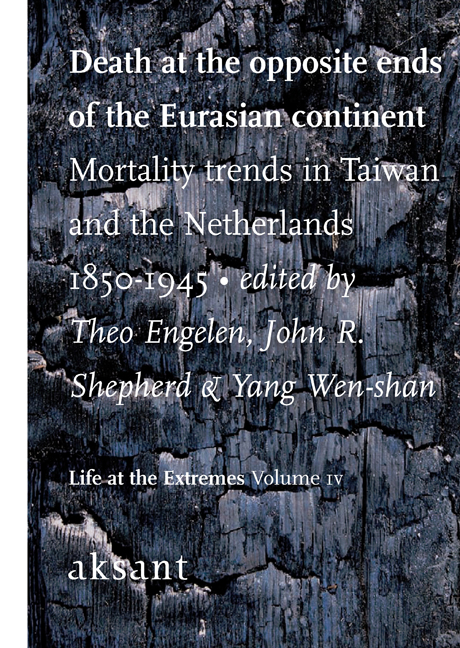 Death at the Opposite Ends of the Eurasian Continent
Death at the Opposite Ends of the Eurasian Continent Published online by Cambridge University Press: 22 January 2021
“Medicine and civilization” were two of the main themes that the Japanese colonial government repeatedly used to persuade Taiwanese to accept colonization. By accepting governmental statistics from colonial Taiwan at face value, post-war scholars commonly conclude that Japanese colonial medicine improved the survival chances of the Japanese in Taiwan and that the Taiwanese gradually enjoyed the benefits of advanced modern medicine, without understanding the complexities of both the scientific and the social history of medicine, and the policy compromises these involve. The social history of medicine in colonial Taiwan developed after the 1990s has never gone beyond the assumptions of modernization theory to inquire into the evolution of state medicine in the colonial period This article therefore analyzes the factors that shaped public health infrastructures in Taiwan, reassesses Japanese colonial policies in the medical field, and explores major changes in public health during the colonial period that illuminate weaknesses in the uncritical portrayal of Japanese colonial medicine's achievements. Generally speaking, the aim of writing this article is not simply to provide an account of the development of modern medicine and public health in colonial Taiwan, but to explore the major features and weaknesses of medical services and public health infrastructures in colonial Taiwan (1895-1945).
The German origin of Japanese colonial medicine in Taiwan
During Taiwan's colonial era, the Japanese government introduced new medical ideas, methods, education, and devices to amend or improve Taiwan's hygienic environment. The effort dramatically shaped Taiwanese population and society in various ways. Undoubtedly, medicine and health care services in colonial Taiwan benefited from the application of modern medical science and technology as well as the implementation of improved administrative and educational systems. The transmission of modern medical knowledge to colonial Taiwan took place through two related processes: the creation of medical resources in Taiwan and the implementation of new policy goals and organizational models for maximizing the development and distribution of new medical techniques and service delivery concepts. Both processes were particularly difficult because Japan's own process of medical Westernization by copying the German concept of Staatsmedizin had begun only in 1870, less than thirty years before.
To save this book to your Kindle, first ensure [email protected] is added to your Approved Personal Document E-mail List under your Personal Document Settings on the Manage Your Content and Devices page of your Amazon account. Then enter the ‘name’ part of your Kindle email address below. Find out more about saving to your Kindle.
Note you can select to save to either the @free.kindle.com or @kindle.com variations. ‘@free.kindle.com’ emails are free but can only be saved to your device when it is connected to wi-fi. ‘@kindle.com’ emails can be delivered even when you are not connected to wi-fi, but note that service fees apply.
Find out more about the Kindle Personal Document Service.
To save content items to your account, please confirm that you agree to abide by our usage policies. If this is the first time you use this feature, you will be asked to authorise Cambridge Core to connect with your account. Find out more about saving content to Dropbox.
To save content items to your account, please confirm that you agree to abide by our usage policies. If this is the first time you use this feature, you will be asked to authorise Cambridge Core to connect with your account. Find out more about saving content to Google Drive.